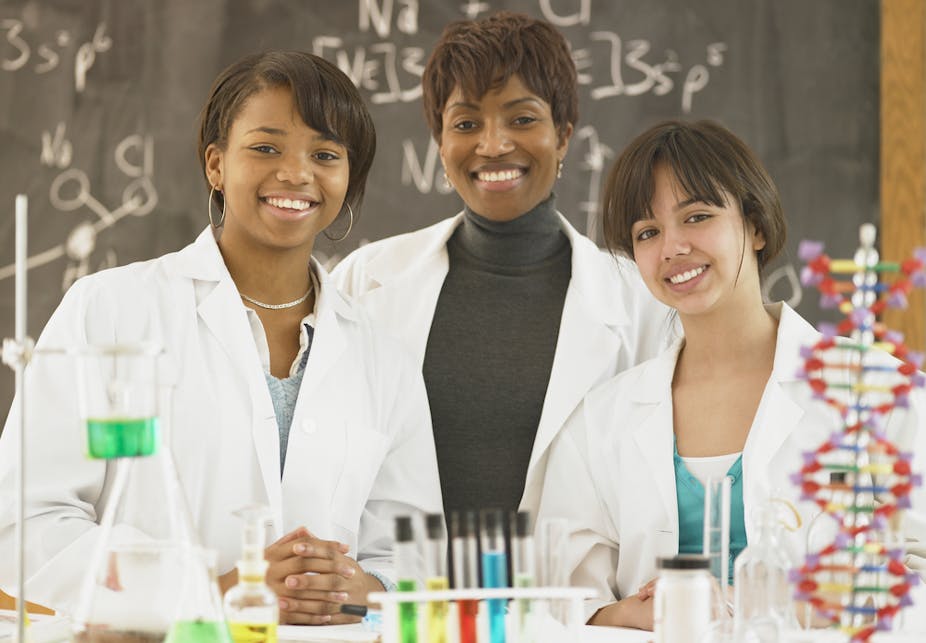Gender equity has not been achieved at tertiary institutions in southern Africa. That is why initiatives to increase the participation of girls and women in science, technology and innovation are important.
In 1988, I was the first woman head of a department (microbiology) in the science faculty at the University of Cape Town. There was one other woman academic in our complement of seven. Although things have improved considerably since, gender equity remains a goal at academic institutions throughout southern Africa.
In 2012, research was commissioned on the state of women in science and technology in Swaziland. This was part of a wider exercise that included Angola, Namibia and South Africa. The report captured many of the challenges faced by the women interviewed. These included:
-
chauvinism in the workplace (and beyond);
less pay than male colleagues at similar levels;
balancing work with home commitments;
a lack of role models; and
limited opportunities for advancement.
Although the survey was conducted in Swaziland, it considered our experiences as women in science and technology in South Africa. Evidence in a later report reflects many of the same issues.
Defining gender equity
Gender equity is about providing equal opportunities and creating equal expectations. Studies have shown gender equality in science and technology is not simply a matter of fairness. To strengthen research, the total human resource must be used.
A better gender balance means that universities, colleges and research institutes will get the best talent from both sexes while reflecting diversity.
Improved gender balance in academic staff will have a positive effect on the recruitment of female students and researchers.
Local initiatives, global partnerships
The Academy of Science of South Africa hosts the Organisation for Women in Science for the Developing World (OWSD) national chapter.
It aims to create networking, advocacy and information sharing between organisations. Promoting increased participation of girls and women in science and technology professions in South Africa is the goal.
The organisation works towards strengthening national science and technology activities among women scientists in South Africa. Part of its mandate also involves initiating activities that address national concerns in conjunction with all levels of society.
One of the ways that the organisation aims to increase the numbers of women in science and technology is by funding women scientists from the developing world to study in other developing countries.
South African universities and research institutes host the largest number of OWSD fellowship holders in the world studying towards a masters or PhD. There are currently 30 fellows from 13 African countries studying topics ranging from engineering to mathematics to agriculture at ten institutions.
One of the chapter’s functions is to mentor these fellows and run workshops for them and other OWSD members on science writing and communication, networking and career development.
The organisation also aims to influence policy. It does this by providing evidence-based science advice to policymakers and other stakeholders to address issues in relation to gender in science and technology.
The organisation also mentors young scientists.
What next
Mindful of the challenges facing the continent, the organisation was recently chosen by GenderInSITE as its southern African champion.
The gender in science, innovation, technology and engineering (GenderInSITE) initiative is a global effort to raise awareness among decision-makers on the need for gender equality. It targets the Southern African Development Community secretariat and all African academies of science in policy development.
The OWSD’s South African chapter is still a new organisation, with 63 members. But it is drawing on them to access the skills and expertise of a bigger network of more than 4000 OWSD members worldwide.
One of the key projects in the year ahead is believed to be a first-time survey on a global scale of the participation of women in science academies around the world. This follows proposals in a report by the InterAcademy Council.
The results will be critical for advising academies on progress in increasing the numbers of women members and their participation in academies of science.

